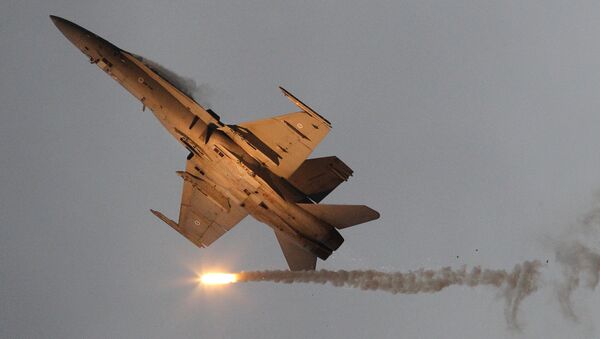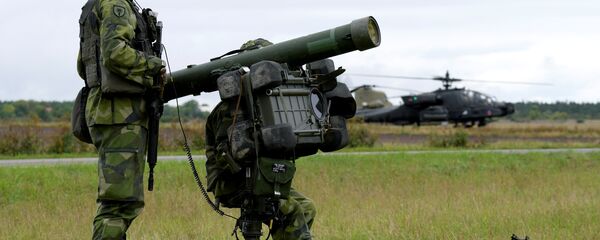The Ruska 17 drills began on Monday and will continue through Friday, October 13. It involves over 60 aircraft and about 4,500 personnel at Air Force bases across the Nordic country. In terms of the sheer number of troops, the drills are the largest of the year in Finland.
According to the Finnish Air Force, the objective of Ruska 17 is to train its air defense for emergency situations.
Finland's Air Force is contributing more than 30 Hornet fighters, 14 Hawk jet trainers and a number of transport and reconnaissance aircraft, whereas the Finnish Army is involving its NH90 helicopters.
According to the Finnish daily Hufvudstadsbladet, Finnish and Swedish Air Forces began participating in each other's exercises last year. In 2016, both countries exercised in the role of each other's opponents, whereas this year is the first time Swedish aircraft will actually train to defend Finland.
Haastavan ja todenmukaisen maalimallin luominen on #Ruska17:n ilmapuolustusjoukkojen harjoitusvastustajan tavoitteena. — Ruska 17 Opposing Force aims at simulating a realistic & challenging adversary for the units with air defense mission. https://t.co/VtwQHomlHZ pic.twitter.com/ETejqaPsu2
— Ilmavoimat (@FinnishAirForce) 9 октября 2017 г.
The Ruska 17 flight exercise missions will be conducted between 8:00 am and 11:00 pm daily all week and are scheduled to be flown out of several air bases across the country, including Rovaniemi, Kuopio and Pirkkala. The Swedish aircraft will fly out of the Kallax Air Base in Sweden.
Ilmavoimat lentää ylilennon #hornet'illa Kuopiossa tänään klo 13.30 valtakunnallisen Lottaperinnejuhlan kunniaksi. Säävaraus. #karlsto pic.twitter.com/SsZaxLneEh
— Ilmavoimat (@FinnishAirForce) 8 октября 2017 г.
In September, Finland and Sweden joined forces for Aurora 17, which was touted as Sweden's largest exercise since the end of the Cold War. During Aurora 17, which also featured the debut of US tanks on formerly neutral Swedish soil, Stockholm practiced its defensive abilities against a fictitious enemy from the east, which bore striking similarities to Russia.
Det är uppenbert från scenariot att #Aurora är övning av försvar av Sverige #föpol #säkpol pic.twitter.com/jftEY0rJYS
— TorstenAkesson 🇪🇺 (@TorstenAkesson) 14 сентября 2017 г.
According to Swedish Defense Minister Peter Hultqvist, Aurora 17 was perceived as a clear signal that Sweden contributes to the stability in its part of Europe and is serious about giving and receiving assistance from other countries in a crisis situation.
"Aurora 17 is a clear sign that Sweden is now focusing on increasing the capacity of the national defense," Peter Hultqvist wrote in his analysis of Aurora 17, published by the Swedish daily Svenska Dagbladet, stressing the need of in-depth cooperation with other countries.
To match Hultqvist's rhetoric, Sweden's defense spending will increase by 24.7 percent between 2014 and 2020.



